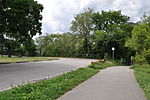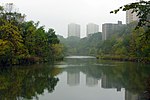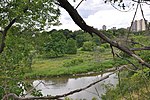Weston Collegiate Institute
1857 establishments in OntarioEducational institutions established in 1857High schools in TorontoInternational Baccalaureate schools in OntarioSchools in the TDSB ... and 1 more
Use mdy dates from May 2021

Weston Collegiate Institute (Weston C.I., WCI, Weston), formerly known by its previous names of Weston Grammar School, Weston High School, Weston High and Vocational School and Weston Collegiate and Vocational School is a Grade 9 to 12 public high school located in the York South-Weston area of Toronto, Ontario, Canada. It is the second oldest high school in Toronto, after Jarvis Collegiate Institute. Weston CI is located on 100 Pine Street and has a student population of about 1043.
Excerpt from the Wikipedia article Weston Collegiate Institute (License: CC BY-SA 3.0, Authors, Images).Weston Collegiate Institute
Pine Street, Toronto York
Geographical coordinates (GPS) Address Phone number Website External links Nearby Places Show on map
Geographical coordinates (GPS)
| Latitude | Longitude |
|---|---|
| N 43.703847 ° | E -79.509316 ° |
Address
Weston Collegiate Institute
Pine Street 100
M9N 2Y9 Toronto, York
Ontario, Canada
Open on Google Maps





